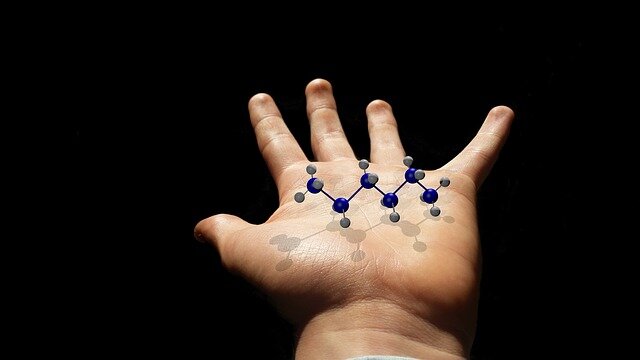Depersonalization and derealization are unhealthy patterns of thought that result in feeling like you’ve lost your personhood or humanity, failing to recognize the humanity in others, and struggling to grasp reality.
People who suffer from derealization question whether or not the world around them is real, and because of this, often have a very hard time functioning in the world around them.
Depersonalization is equally harmful: it robs the person of their feelings of humanity and makes them feel disassociated from the world around them.
Understandably, people who suffer from depersonalization and derealization may have a difficult time with social interaction, and may feel isolated and alone.
The best way to combat depersonalization and derealization is to get professional help from a mental health specialist, since depersonalization and derealization are often symptoms of larger mental illnesses, like anxiety or depression.
Along with professional help, these are some methods that can help reduce the panic, stress, and depression that come from depersonalization and derealization.
6. Assess your current medications.
If you’re currently taking medications for anxiety, depression, or any other illness, talk to your doctor about feeling dissociative: it could possibly be a side effect of your medication.
Common medications that can induce depersonalization or derealization include antihistamines, anti-anxiety medications, carbamazepine, fluoxetine, fluphenazine, indomethacin, nitrazepam, and sodium pentothal.
5. Monitor your recreational drug use and diet.
According to the US National Library of Medicine, long-term use of hallucinogens like LSD and marijuana can either cause, increase, or lessen feelings of dissociation in people with depersonalization and derealization disorders depending on their neural chemistry.
If you’re in a state that allows medical marijuana, consider talking to your doctor about possible depersonalization treatment; but in any other case, stay as far away as possible from unregulated marijuana or LSD from street vendors. While LSD and other hallucinogens may have promise in helping treat depersonalization, their lack of regulation can mean it may worsen your symptoms.
Regulating less intense chemicals like caffeine and alcohol are important as well. Because caffeine and alcohol both interfere with natural brain processes, eliminating or reducing their presence in your diet can help mental health and reduce the number of reactions with your medication.
4. Get some sleep (no, seriously).
We all know the woozy feeling from not having enough sleep. And while one or two all-nighters are fine, consistently having a bad sleep schedule can contribute to feelings of depersonalization or disassociation, not to mention a host of other negative effects on a person’s health.
The number of hours needed per night is different for everyone: according to the UCLA Psychiatry and Behavioral Services Center for Sleep Research, the best way to figure out how much sleep you need is to go cold turkey on everything.
Quit caffeine, quit sleeping pills, quit anything that wakes you up or puts you to sleep, and let your body naturally fall into a sleep pattern rhythm. It may take a couple weeks, but you’ll find your body may need much more or way less sleep than you’ve been providing it.
It’s important to fix that in order to effectively manage any mental illness, especially depersonalization and disassociation disorders.
3. Instead of obsessively concentrating on trivial things, practice purposeful, mindful meditation.
One of the hardest and most challenging aspects of depersonalization and derealization is the feeling of obsession, or not being able to “let things go”.
This obsessive quality can not only be personally distressing, but is also often one of the most significant symptoms that make forming social relationships with other people extremely difficult for people who struggle with it.
Obsession can be overwhelming, and can be tough to treat “on the spot”. However, practicing daily mindful meditation can help prevent obsessive episodes from occurring.
Mindful meditation can take many forms, and it’s important to find which type works best for you.
Essentially, a mindful meditative session will include focusing your entire being, mind and body, on the present moment: the pillow you’re sitting on, the smell you’re smelling, the thoughts you’re thinking.
You don’t pass judgment on the thoughts or feelings, you simply let them exist.
You accept the world as it is, for just 10 or 20 minutes, and feel calm and rooted in reality.
Guides for mindful meditations can be found virtually everywhere, and remember: the best ones are free. Mindful meditation has been successfully practiced for centuries, so don’t let some scam artist in L.A. convince you he has a “secret formula”.
Do, however, research different guides for mindful meditations, as everyone’s needs are different.
2. Find and foster communities, both likeminded and otherwise.
One of the toughest parts about living with depersonalization and derealization is the feeling of social isolation.
When first learning how to manage your symptoms, you may feel uncomfortable talking to people in public, and that’s okay: everyone recovers at different rates, and taking things slowly isn’t bad.
Luckily, lots of online communities exist for people suffering from depersonalization and derealization, from subreddit communities to 4chan forums and Facebook groups. Sometimes forming connections online can be easier than forming connections in real life, and it’s not a bad place to start.
Of course, it’s extremely important that your social interactions don’t begin and end online. Moving outside of your comfort zone, meeting people without your same mental illness, is very important.
Apps like Meetup are great places to start: if you’re interested in books, they have book clubs, or if you love football, there are lots of Meetup groups that meet for games. If you crave a more romantic or sexual connection, apps like Tinder or websites like Match.com can be good places to start to meet other people.
Because the worlds of online communities and the “outside world” are being more and more connected by apps like those mentioned, it’s becoming easier to transition to a social life outside of your laptop.
1. Be kind to yourself.
It’s very easy to let your inner monologue turn hateful: you’re not good enough, you’re bad with people, you have no friends, you’re a loser, etc.
If you follow nothing else in this list, follow this advice: do not let that internal script continue to play. Self-hatred will do nothing but make your condition worse. Instead, practice mindful thinking: when something like “I’m so stupid” crosses your mind, immediately say to yourself, “I may have some things to learn, but I am a smart, important person”.
Counter every negative thought you have with a good one and see how much self-love can help.
As always, take everything here with a grain of salt — that grain of salt, of course, being your mental health provider.
Only a trained professional can give you the complete resources you need to be mentally healthy, and there’s absolutely no shame in accessing one.
Have a great week, and remember to love yourself!



















